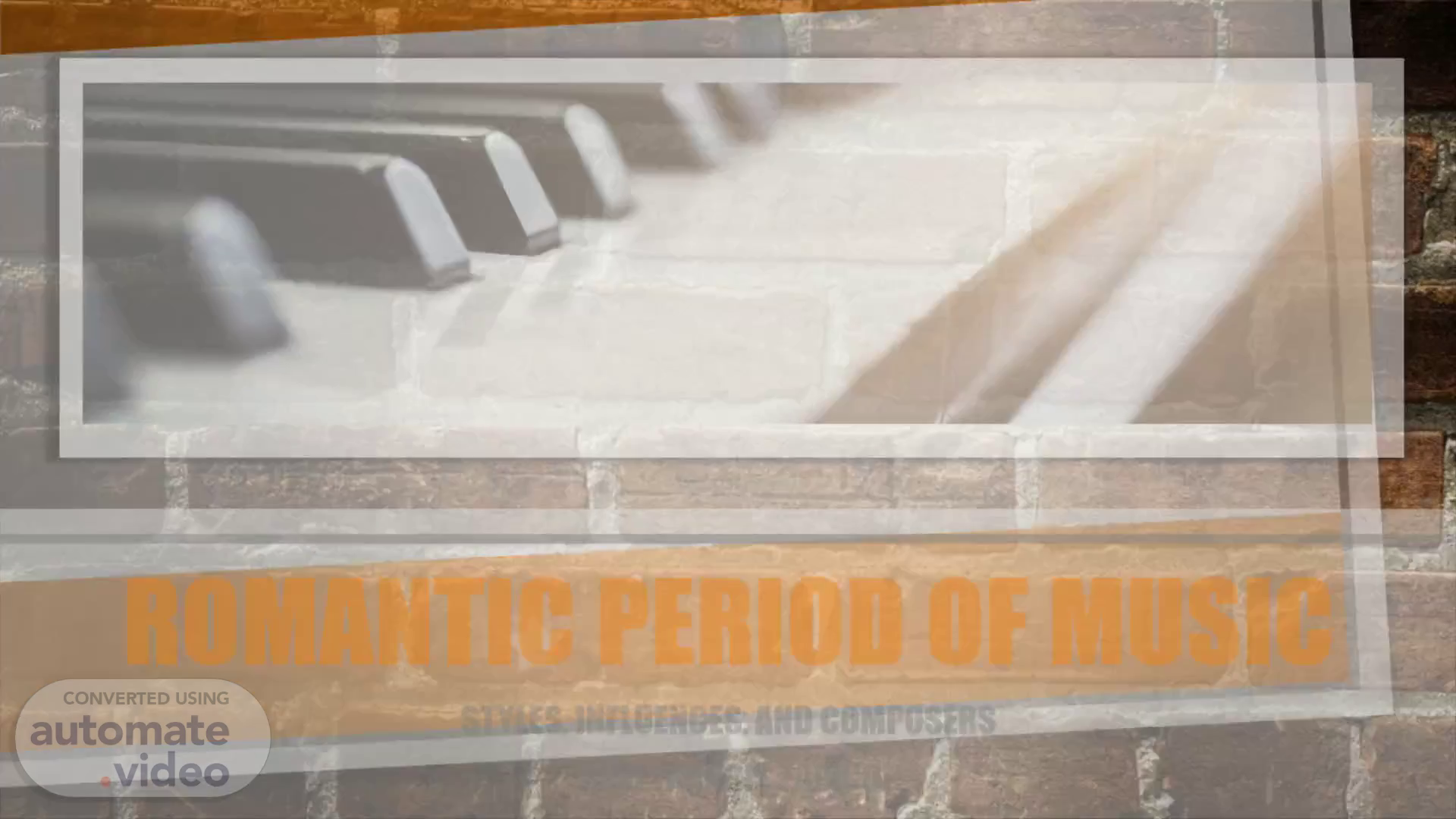
Romantic Period of Music
Scene 1 (0s)
[Audio] Romantic Period of Music Styles, influences, and composers.
Scene 2 (9s)
[Audio] Background Around 1830- 1900 compositions became increasingly expressive and inventive. Based on the concept of romanticism which is characterized by inspiration, subjectivity, individuality, and greater expression..
Scene 3 (27s)
[Audio] Influences - The Industrial Revolution and its advancements have been an improvement in the mechanical side of music (ie. Instruments). - Rise of the middle class, In this era many romantic composers performed for the public compared to earlier composers who were under patronage of the aristocracy. - Nationalism, composers were heavily influenced by their nationality and the distinctions of their country and traditions..
Scene 4 (57s)
Guitar. Styles of Romantic Music. Text Description automatically generated.
Scene 5 (1m 9s)
[Audio] Overture Originally composed to accompany ballads and operas. In the romantic period composers started writing them independently. Originally written as an opening to the genres above romantic period overtures are used instill emotions of action to the listener. Sound sample: Der Beherrscher der Geister By Carl Maria Von WEBER.
Scene 6 (6m 9s)
[Audio] Chorale prelude A Genre of liturgical music composed for organs using a chorale as its basis. Typically polyphonic with a chorale tune. Usually used to introduce a hymn about to be sung by the congregation. Sound sample: Eleven Chorale Preludes By Johannes brahms.
Scene 7 (9m 10s)
[Audio] Lied A genre of songs from Germany. Sung by a solo singer and accompanied by a pianist. Made by setting poetry to classical music to create a polyphonic piece Sound sample: Die schöne Müllerin By Franz Schubert.
Scene 8 (14m 10s)
[Audio] Program music A type of instrumental art music with an extramusical narrative. The narrative may be delivered to the audience through the title or an intended artistic style or choice. Sound sample: symphonie fanstastique By hector berlioz.